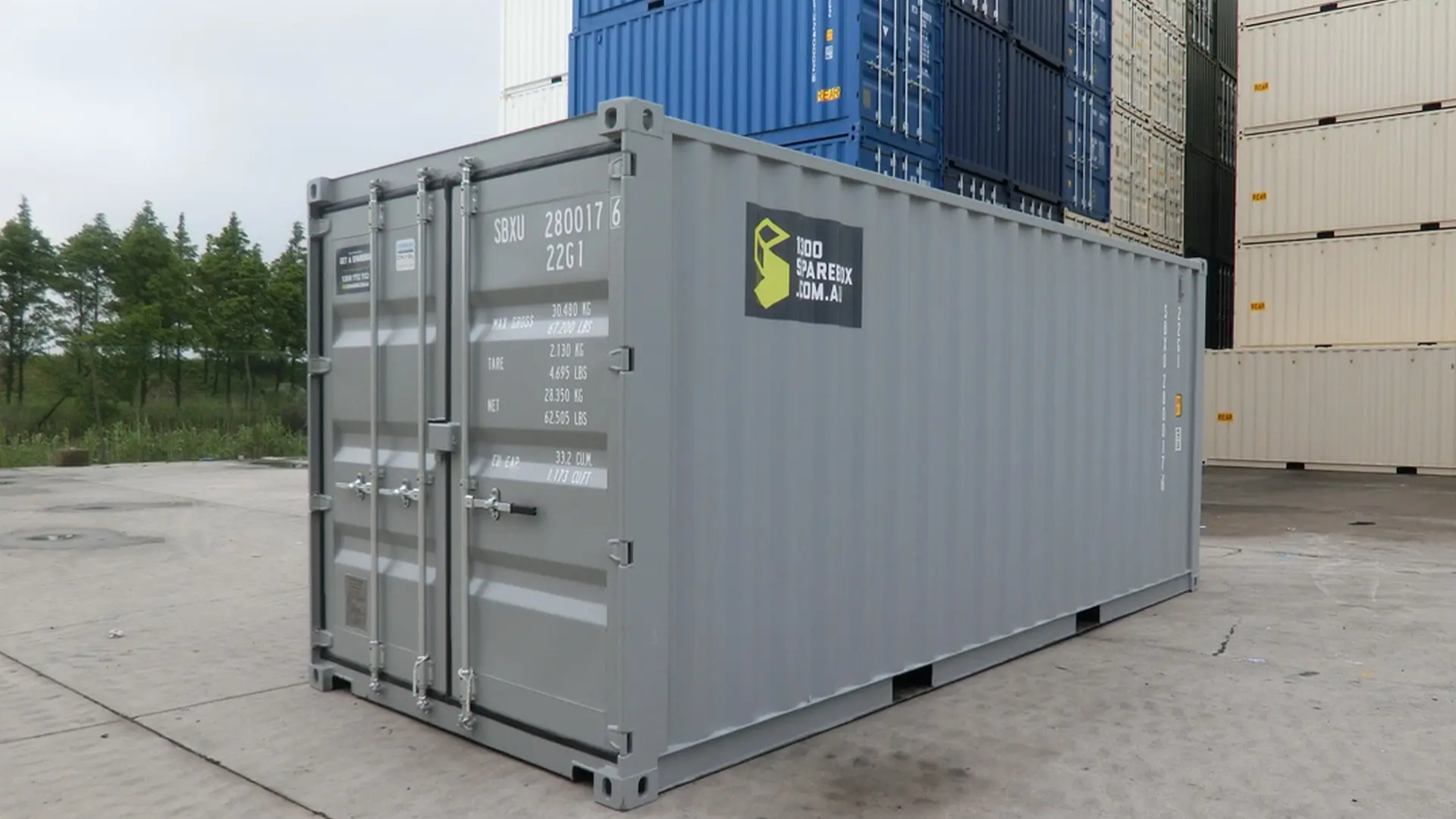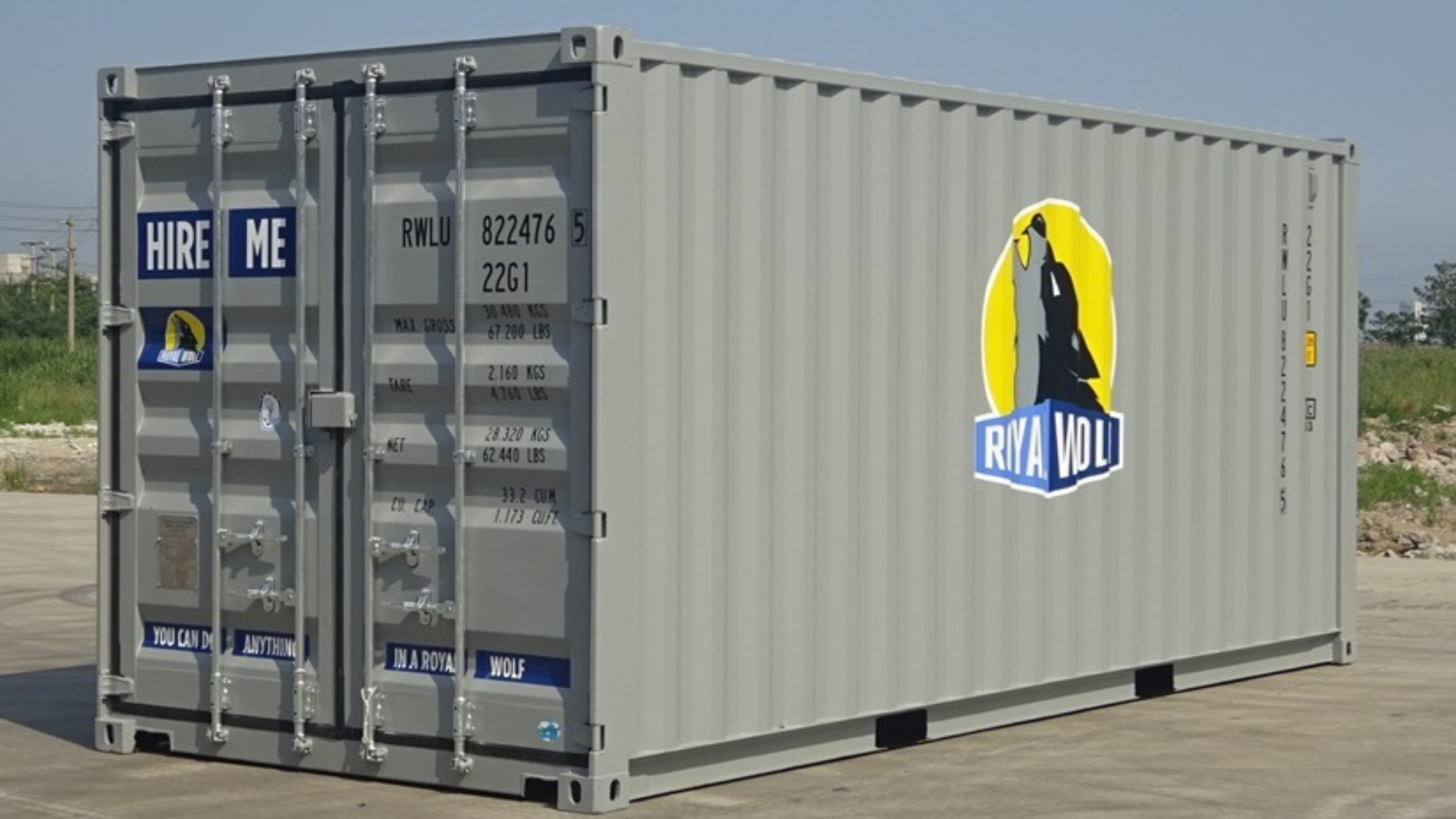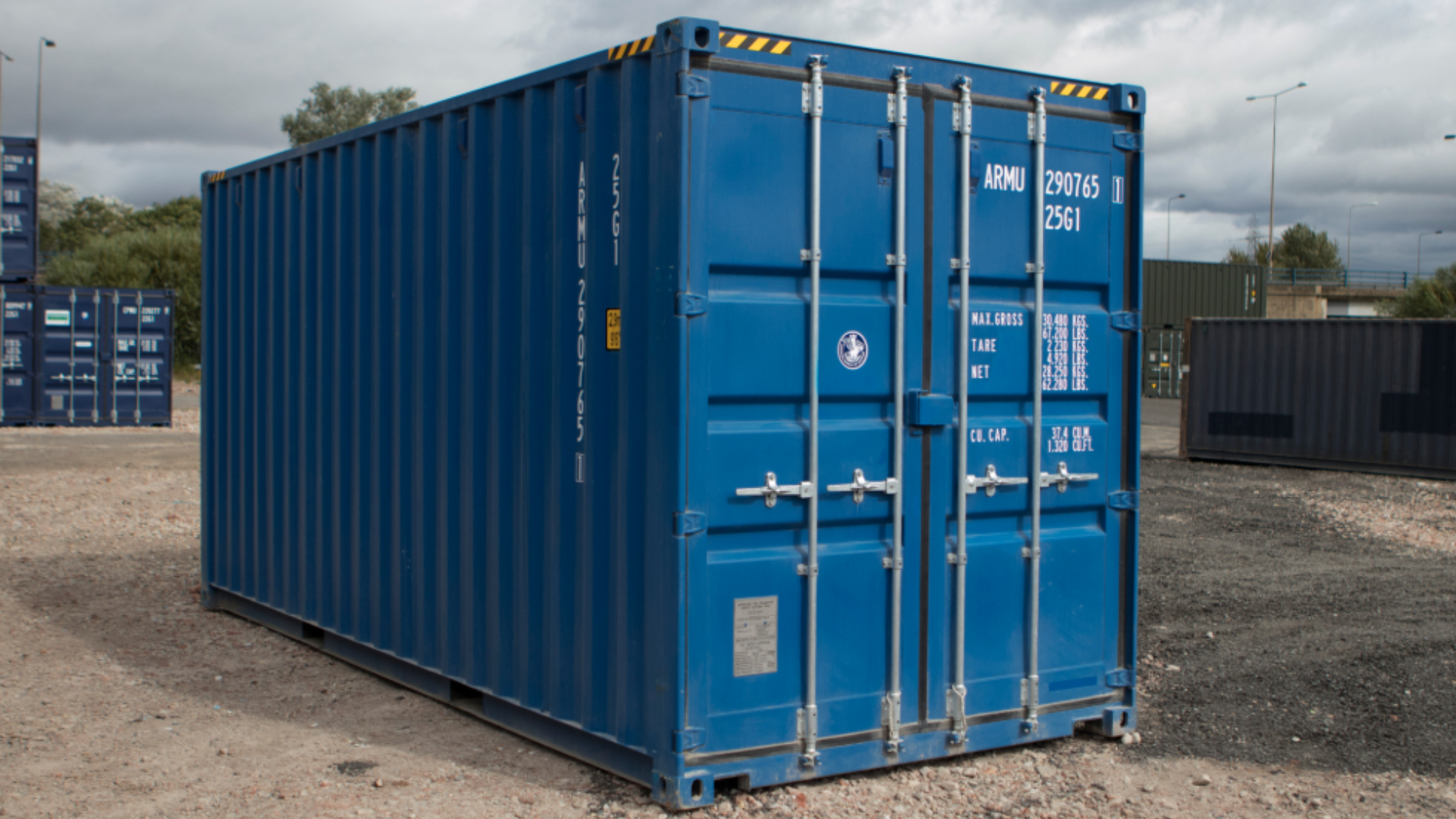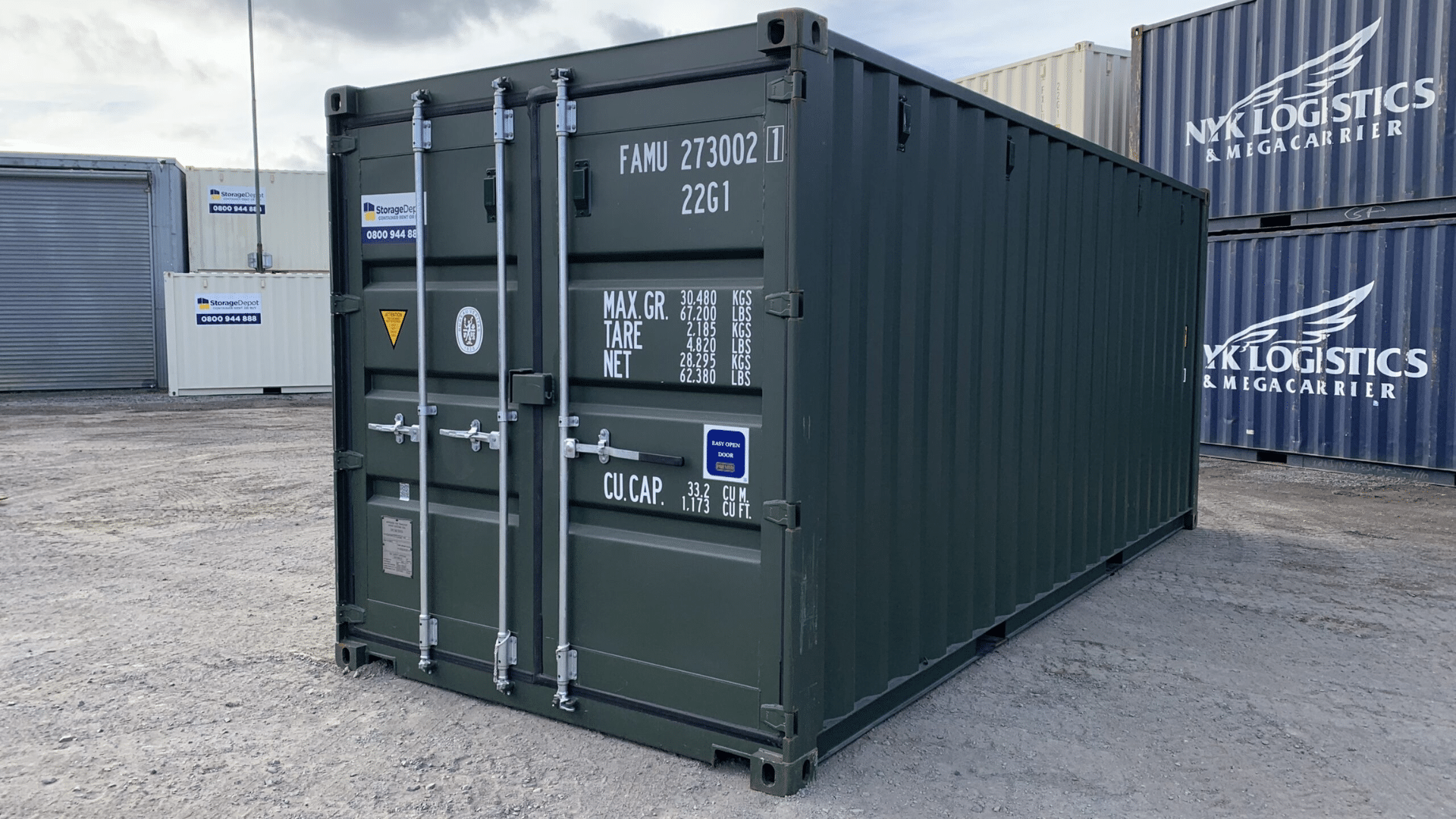When I first started looking into shipping containers, one of the biggest questions I had was about weight.
A 20-foot container is one of the most common sizes used worldwide, but many people still ask, How much does a 20-foot shipping container weigh?
Knowing this matters because it affects transport costs, safety, and how much cargo you can load inside.
Knowing the answer is important because weight affects everything from transport costs to how much cargo you can safely load inside.
In this post, I’ll walk you through the typical empty weight of a standard 20-foot container, how much it can carry when fully loaded, and how it compares to other container sizes.
By the end, you’ll have a clear idea of what to expect and how this information can help you plan your shipping needs with confidence.
What is the Empty (Tare) Weight of a Standard 20 ft Container?

The empty weight of a 20-foot shipping container is often called the “tare weight.” This simply means how much the container weighs on its own, without anything loaded inside.
On average, a standard 20-foot steel container weighs between 2,050 and 2,300 kilograms, or about 4,500 to 5,000 pounds.
The exact number can change a little depending on the manufacturer and the materials used, but most fall within this range.
It’s important to know the tare weight because it helps you calculate how much cargo you can safely add.
When you subtract the tare weight from the container’s maximum gross weight, you’ll get the payload capacity, which is the amount of goods it can carry.
20ft Shipping Container: Loaded Weight (Gross Weight) Limits
The gross weight of a 20-foot shipping container means the total weight of the container plus the cargo inside.
In most cases, the maximum gross weight for a standard 20-foot container is about 24,000 kilograms, or around 52,900 pounds.
Some containers, depending on design and build, can handle up to 30,480 kilograms, or about 67,200 pounds.
This number is set by international shipping standards to keep transport safe and efficient.
Knowing the gross weight limit is important because it tells you the maximum amount of cargo you can load.
Going over this limit can cause safety risks, fines, or damage during transport, so it’s always best to check the exact rating printed on the container’s specification plate.
Weight Variations by Different 20 ft Container Types
When I first looked into shipping containers, I learned that not all 20-foot containers weigh the same. The tare weight can change depending on the type and design.
1. Standard 20 ft Container

A standard 20-foot dry container is the most widely used option. Its empty weight usually falls between 2,050 and 2,300 kilograms (around 4,500 to 5,000 pounds).
This type is built from durable steel, which makes it strong enough for heavy loads and repeated use. Because of its balance between size and strength, it’s the go-to choice for general cargo.
If you’re shipping everyday goods, this is the container you’ll most likely work with.
2. High Cube 20 ft Container

High cube containers are designed with extra heigh, about one foot taller than standard versions. This added height gives you more storage volume, but it also means the container weighs a little more.
On average, a 20-foot high cube has a tare weight of around 2,313 kilograms (about 5,100 pounds).
While the gross weight limit remains the same as other 20-foot models, the extra tare weight slightly reduces how much cargo you can carry.
3. Refrigerated (Reefer) 20 ft Container

Refrigerated containers, also called reefers, come with built-in cooling equipment to keep goods at a set temperature. Because of this, they are heavier than standard units.
A 20-foot reefer usually weighs about 3,080 kilograms (close to 6,800 pounds) when empty. Even though the gross weight limit is still around 30,480 kilograms, the heavier tare weight reduces the payload capacity.
These containers are essential for shipping perishable items like food, medicine, or flowers.
Why Shipping Container Weight Figures Matter
Understanding container weight isn’t just about numbers; it affects how safely and efficiently your goods move from one place to another.
- Regulations: Overloading a container can break transport laws and lead to fines or shipment delays.
- Costs: Many carriers charge based on weight, so knowing exact limits helps avoid surprise fees.
- Safety: Proper weight ensures cranes, trucks, and ships can handle the load without damage.
- Cargo Planning: Knowing tare, gross, and payload weights helps you pack smart and avoid wasted space.
By keeping these figures in mind, you’ll save money, prevent issues, and keep your shipments moving smoothly.
Standard 20 Foot Container vs. Other Container Types
It’s easier to understand container weights when you compare them side by side. Below is a simple table that shows how a standard 20-foot container stacks up against other common container types.
| Container Type | Empty Weight (Tare) | Max Gross Weight | Payload Capacity (Approx.) |
|---|---|---|---|
| 20 ft Standard | 2,050–2,300 kg (4,500–5,000 lb) | 24,000–30,480 kg (52,900–67,200 lb) | 21,700–28,200 kg |
| 20 ft High Cube | ~2,313 kg (5,100 lb) | Up to 30,480 kg (67,200 lb) | Slightly less than standard |
| 20 ft Reefer | ~3,080 kg (6,800 lb) | Up to 30,480 kg (67,200 lb) | Reduced due to heavier tare |
| 40 ft Standard | ~3,750 kg (8,267 lb) | Up to 30,480 kg (67,200 lb) | ~26,700 kg |
| 40 ft High Cube | ~3,900 kg (8,598 lb) | Up to 32,500 kg (71,650 lb) |
~28,600 kg |
Quick Tips for Shippers and Buyers
When it comes to shipping containers, a few simple checks can save time, money, and stress.
- Check the spec plate: Always confirm the tare and gross weight listed on the container.
- Follow VGM rules: The Verified Gross Mass requirement means you must declare an accurate weight before shipping.
- Use a scale: Weigh the loaded container with a weighbridge or axle scale to avoid mistakes.
- Pick the right type: Choose standard, high cube, or reefer containers based on the kind of cargo.
Keeping these tips in mind helps you avoid problems, stay compliant, and move your goods safely and efficiently.
Conclusion
Now that you know how much a 20-foot shipping container weighs, it’s easier to plan your shipping needs with confidence.
A standard container has an empty weight of around 2,050 to 2,300 kilograms, while the maximum gross weight usually reaches 24,000 to 30,480 kilograms.
These numbers matter because they determine how much cargo you can safely load and how much you’ll spend on transport.
I always recommend checking the container’s specification plate to be sure, since weights can vary by type and manufacturer.
For clearer container weight guides and shipping tips that save time and cost, read my other blogs to plan smarter and ship with confidence.















